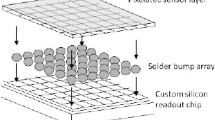Summary
The successful development of lithium-drifted Ge detectors in the 1960s marked the beginning of the significant use of semiconductor crystals for direct detection and spectroscopy of gamma-rays. In the 1970s, high-purity Ge became available, which enabled the production of complex detectors and multi-detector systems. In the following decades, the technology of semiconductor gamma-ray detectors continued to advance, with significant developments not only in Ge detectors but also in Si detectors and room-temperature compound-semiconductor detectors. In recent years, our group at Lawrence Berkeley National Laboratory has developed a variety of gamma-ray detectors based on these semiconductor materials. Examples include Ge strip detectors, lithium-drifted Si strip detectors, and coplanar-grid CdZnTe detectors. These advances provide new capabilities in the measurement of gamma-rays, such as the ability to perform imaging and the realization of highly compact spectroscopy systems.
Similar content being viewed by others
Author information
Authors and Affiliations
Rights and permissions
About this article
Cite this article
Luke, P., Amman, M., Tindall, C. et al. Recent developments in semiconductor gamma-ray detectors. J Radioanal Nucl Chem 264, 145–153 (2005). https://doi.org/10.1007/s10967-005-0687-8
Issue Date:
DOI: https://doi.org/10.1007/s10967-005-0687-8




